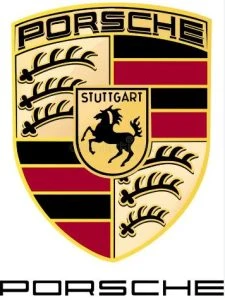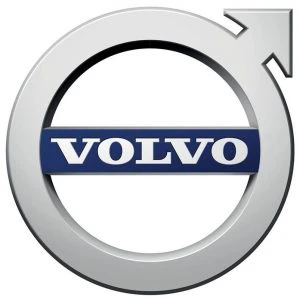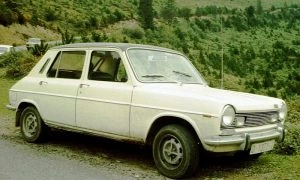European cars
Porsche’s six-stroke engine

Who loves a good internal combustion engine (ICE)? Confession time would have me say that I still love the special characteristics of an ICE and the awesome soundtracks that they can make – none being more special than a sonorous and legendary V8 or even a fully vocal high-pitched straight six.
Now there is news in the hood that Porsche has patented some new technology whereby the introduction of a six-stroke cycle for an ICE of theirs will be made. The common four-stroke cycle that is already used by almost every auto manufacturer, including Porsche, has four strokes: intake, compression, ignition, and exhaust. Porsche states that the six-stroke cycle will make considerable gains in power output while also lowering its levels of emissions. This is great news for ICE fans.
How does it work and what’s the difference? As the numbers suggest, the conventional four-stroke cycle makes a power stroke one in every four times that the piston moves on its vertical axis. Thus, in a conventional four-stroke engine, each piston helps to drive the car about 25% of the time. Porsche’s new six-stroke engine will provide a power stroke twice in its six-stroke cycle – that’s two power strokes out of every six that the piston moves on its vertical axis (or one in three). This means that each piston is helping to power/drive the vehicle about 33% of the time it’s moving. The six-stroke cycle works as follows: intake fuel and air, compress the fuel and air mix, ignition (power), intake more fuel and air, ignition (power), and exhaust.
By allowing the piston to have a variation in its travel length inside its chamber via clever internal gearing and a special vent design, the six-stroke engine can produce more power strokes within its cycle. For the first three strokes, the piston works like a normal four-stroke. Then, on the fourth stroke, the special gearing allows the piston to drop lower in its chamber, presenting some more scavenging ports that allow more fuel and fresh air to enter the cylinder while the exhaust gases escape out the exhaust ports. The fifth stroke ignites the fresh fuel mix, and then the sixth cycle gets rid of all burnt/spent gases.
Who wouldn’t want a great sounding faster and more efficient new Porsche sports car? However, this is not all that the clever team at Porsche have been up to. Porsche has already worked towards creating a fuel that is considered to be a carbon-neutral synthetic fuel made from carbon dioxide (CO2) that has been captured from the atmosphere. That’s right, it is essentially using or recycling atmospheric carbon as fuel for their ICE vehicle.
While still leading the charge for ICE fans, Porsche has not abandoned EVs. It is also worth noting that Porsche is also going in all guns blazing with EV technology as well. Most new models of Porsche have an EV in their line-up already, and the Taycan is a pure EV.
All the same, I’m fascinated by this new six-stroke technology and am looking forward to seeing it in whatever new offerings Porsche decides to serve up.

Sweet Scandi Designs For 2024
There are three main brands of Swedish-designed cars made in 2024. We all know about Volvo; some of us may know of Polestar, and maybe a few of us have heard about Koenigsegg. Apart from Scania, who makes trucks and other things, it’s the aforementioned manufacturers that are creating and making new vehicles.

Volvo
One of the oldest companies in Sweden, Volvo has been making cars since 1927, when Assar Gabrielsson and Gustav Larson worked together to make a substantial car that would be able to withstand the rigours of the Scandinavian climate. The first model was called the OV4 and had two round lights at the front, and the rectangular carriage with four wheels at the corner design that was typical of the early cars of 1900–1925. In the 1930s, Gabrielsson and Larson made the rather stylish and streamlined PV36, which proved to be a solid and comfortable means of transport.
Another standout car Volvo made was the stunning P1800 Coupe of the 1960s. From the 1980s–2000, Volvo were typically making very comfortable, safe, reliable cars that were typically wedge-shaped or boxy in their outline. Since the turn of the century, 2000–2024 has seen Volvo continue to make supremely comfortable cars with plenty of style and a more rounded shape that can slip through the air a little easier. Volvo have continued to excel in the crash testing and crash safety data.
In 2024, Volvo make a wide range of sedans, wagons, and SUVs. Current models for Australia include the:
- Volvo C40 SUV (one model), which was the brand’s first small electric vehicle (EV). A single electric motor or a dual electric motor are available to power the C40.
- Volvo EX30 Wagon (two models), a brand-new EV wagon with plenty of safety.
- Volvo S60 Sedan (one model), one of the most beautiful luxury sedans currently on the road that is powered by a mild hybrid engine that makes it both fuel efficient and swift. The AWD sedan is loaded with luxury and places a high priory on occupant safety, comfort, and the latest technology. It is currently one of the best luxury sedans on the market.
- Volvo V60 Cross Country Wagon (one model). Offering style, luxury and safety, the V60 Cross Country Wagon offers a credible light off-roading capability along with its perfect take-the-family-on-an-adventure prowess. Like the S60, the V60 is powered by a mild hybrid engine, is available in AWD, and is loaded with equipment.
- Volvo XC40 SUV (three models). The Volvo XC40 offers a choice of petrol engines. But you can also opt for the fully electric XC40 Recharge model.
- Volvo XC60 SUV (four models). The Volvo XC60 medium-sized SUV is superbly comfortable, luxurious, and safe. You have a choice of mild hybrid or powerful plug-in hybrid powertrains.
- Volvo XC90 SUV (three models). The Volvo XC90 is a large, luxurious SUV that can seat up to seven occupants. The mild hybrid or plug-in hybrid powertrains deliver plenty of punch and economy. This is one of the best vehicles in its class and it’s also very safe.

Polestar
Polestar was founded in 1996 by Volvo Cars’ partner Flash/Polestar Racing and was acquired in 2015 by Volvo. Polestar was also secured by Greely in 2010. Polestar vehicles are a brand of automotive vehicles that have their design headquarters in Sweden, but the vehicles are produced in China. Polestar vehicles are full EVs with luxury and performance, and are considered as a separate EV performance brand from Volvo. In 2024, Polestar makes stylish hatchbacks, SUVs, and coupes. The current models for Australia include:
- Polestar 2 Hatch (three models)
- Polestar 3 SUV (five models)
- Polestar 4 Coupe (two models)

Koenigsegg
On 12 August 1994, Christian von Koenigsegg (22 years old) decided to follow his dream and build the world’s greatest sports car. Thirty years later, the dream lives on. Having made many models over the three decades, Koenigsegg now offers two models in Australia from an outlet in Victoria:
- 125 Jesko, a supercar powered by a twin-turbocharged 5.0-litre V8 engine which delivers 955 kW of power and as much as 1500 Nm of torque to the rear wheels.
- Gemera, a supercar with four seats. This is a plug-in hybrid supercar made for touring (rather quickly). The Koenigsegg Gemera uses a twin-turbo 2.0-litre three-cylinder engine that is also matched up to three electric motors – one electric motor powering the front wheels, and one electric motor on each rear wheel as well. Combined outputs stand at a whopping 1268 kW of power and 3500 Nm of torque, which is sent through a single-speed Koenigsegg Direct Drive transmission to all four wheels. The 0–100 km/h sprint is achieved in less than 2 seconds, while the car’s top speed is around 400 km/h.
We’ll add more in-depth reviews of these cars (except for the Koenigseggs) at our car reviews page at some point in the future, so have a look over there to find out more.
Simca: A Forgotten Marque?
The first car I ever owned was a Simca. Before I owned it, I had never heard of the marque, and my dad, who had helped me find this set of wheels to get me to a summer job, described it as the French equivalent of a VW Beetle or a Mini. After that summer of using the Simca to get to my holiday job, I ended up selling it and using the money to buy a fridge, which I needed for my new flat. I have never heard or seen any other Simcas since then. Needless to say, there is that part of me that, now that I have left my student days well behind me and am probably officially middle-aged, is kicking myself for selling it (the fridge is also long gone). Especially as now, it would be worth a lot more than a refrigerator, given that would have been a fairly rare classic car. The same could probably be said by most of us about our student cars.
I cannot remember the model of Simca that I owned. However, a quick crawl through the range of images online suggests that it was probably a 1000 or 1100. Given that the engine was at the front (I remember almost ritually checking up the fluids every week on a Thursday, opening the bonnet to do so), I can therefore conclude that it was a 1100, as the 1000 had a rear engine, like a VW Beetle.

Simca 1100 – a wee trip down memory lane for me.
I have noticed blank looks similar to mine when I start talking about my first car. “Who makes that?” is quite a common question. As it would be nice to have a nice article to direct these dinner party guests to, I thought I’d put together a bit about Simca, what they made and what happened to them.
My father had called the Simca the French equivalent of the Beetle or Mini. He would have done better to say that Simca was the equivalent of the Fiat Bambina or Fiat 500. This is because the company, originally known as “Société Industrielle de Mécanique et Carrosserie Automobile” (that’s French for “Mechanical and Automotive Body Manufacturing Company”) was founded by Fiat in 1934 so they could outsource the production of their 508 and 518 models. Then World War 2 happened and Simca nearly went under, especially because of its Italian roots, and the Italians (under Mussolini’s Fascists) had been rather pally with the Nazis who had occupied France during the war. However, the company won a contract to repair US Army Jeeps, which put them on a sound financial footing.
For the next two or three decades, Simca grew slowly, although they were overshadowed by the better-known French marques, Renault, Citroen and Peugeot, especially Renault. However, it was successful in its home country, with the 1100 being one of the most popular cars in France by the late 1970s. Simcas were manufactured in a number of countries, including Australia, which is probably where the one I owned was made. The company also managed to take over the Talbot-Lago brand, with several Simca models also being sold with Talbot badging.
However, Simca was itself taken over, slowly and surely, by Chrysler. The American company bought a sizeable share of Simca in the late 1950s, although the company was still mostly a subsidiary of Fiat. Chrysler gradually edged Fiat out and took over the majority of shares in the 1960s. Finally, by the early 1970s, Chrysler took the company over completely and Simca’s name was changed to Chrysler France. The old Simca badge was phased out, with the last official Simca being made in 1973, which tells me that my car was older than me. After that, the cars made in Simca’s factories all had the Chrysler badge, including the Alpine and the Horizon.
I doubt I will try hunting down another example of my old Simca (presumably) 1100. If I were to look for a classic car, it would probably be something else, even though I thoroughly enjoyed driving my Simca, despite the lack of power steering and the fact that the speedo was in mile per hour, meaning that I had to do plenty of mental arithmetic during my daily commute to ensure I kept to the speed limit. However, given that Chrysler Europe was itself taken over by the Peugeot group in the late 1970s, I started speculated what the closest modern-day equivalent would be. I had a look at the latest offerings available from Fiat-Chrysler Australia (an appropriate blend of names, given Simca’s history) and decided that the closest thing was… the Fiat 500. Which is where Simca started, ouroboros fashion.

The Ouroboros – ending where it begins. Wouldn’t it make a great automotive logo?
AMG One Nürburgring Record

Doesn’t this car look immense! The AMG One has become the fastest road-legal production car to run around Germany’s famous track, the Nürburgring. The track is just shy of 21 kilometres long and is full of challenging corners with some scintillatingly quick straights thrown in for good measure.
The AMG One’s two-seat cockpit is accessed via doors that open up on the diagonal – forwards and upwards. The car’s seats are moulded into the structure of the car to save weight and are made of a magma grey nappa leather and black Dinamica microfibre. The backrest can be adjusted to two different angles. Despite the minimalist design, the AMG One comes with features like climate control, electric windows, an infotainment system, and a rear-view camera.
It is quite a car! The exterior looks stunning, with the exterior having an airbrush finish to it that features hundreds of little three-pointed stars – like on the current Mercedes Formula One cars. The car’s front wheels boast 19-inch rims, and the rear rims are 20-inch. The push-rod spring struts are aluminium and can be adapted to three settings: Comfort, Sport and Sport Plus. Anti-lock brakes, a three-stage stability control system, and a nine-stage traction control system all work in unison to keep the AMG One firmly in control and well-planted. Shod with the best Michelin Pilot Sport Cup 2R M01 tyres, there is a load of grip to be had.
The car’s ride height can be hydraulically dropped 37 mm at the front and 30 mm at the rear. A Drag Reduction System has been implemented into the design for reducing downforce by around 20%. The drag reduction works by closing the louvres over the front wheels and retracting the rear wing so that the car can accelerate to higher speeds more rapidly. This feature, of course, is deactivated automatically when the driver hits the carbon ceramic brakes or takes on a corner.
Designed with a carbon-fibre monocoque structure, the platform helps to reduce the weight and enhance the car’s stiffness. AMG has managed to keep the kerb weight of the AMG One down to below 1700 kg. A lot of special work has been done in the aerodynamics department. That’s why the AMG One has an active front splitter, a massive deployable rear wing, louvres that are visible over the top of each of the front wheels, and even a distinctive fin that runs down the backbone of the car. All of these important components are there to enhance the flow of the air over and around the car.
The AMG One has four electric drive motors, and Mercedes say that the car has an all-electric range of 18.1 km. Two of the electric motors (located at the front) also work a torque vectoring system across the front axle. When the ICE engine is running at the same time as the electric motors, the car is in full AWD mode. The ICE motor is a 1.6-litre turbocharged unit, derived from the 2015 Mercedes-AMG Petronas Formula One Team’s car. This engine runs alongside the MGU-K hybrid system, giving the AMG One a combined power output of 782 kW.
The AMG One’s official performance stats include a 0-100 km/h time of 2.9 seconds, a 0-200 km/h sprint time of just 7.0 seconds, and a top speed of 352 km/h.

Maro Engel was the car’s driver for the record lap time, and he was able to run the AMG One around the Nürburgring in a record time of 6 min: 35.183 seconds. This time is eight seconds faster than the previous record set last year by Lars Kern in a Porsche 911 GT2 RS MR. Maro mentioned that the track conditions weren’t ideal at the time the record was set, suggesting that the AMG One could definitely run the lap faster still with better track conditions.